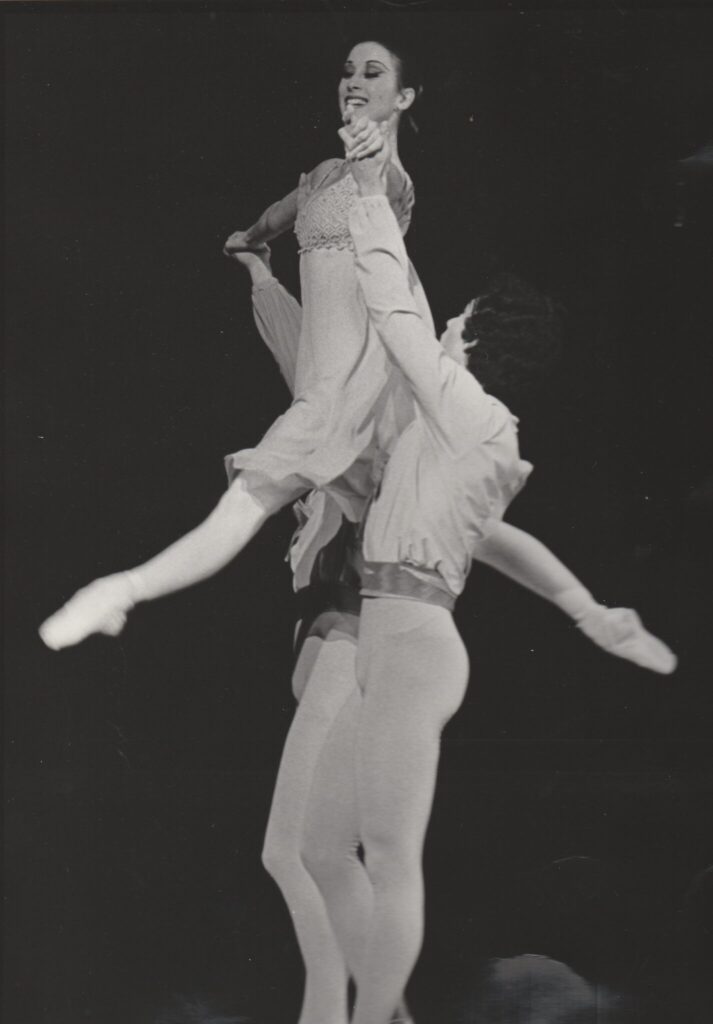
“Cherish the flame. Don’t worship the ashes.”
Mavis Staines, artistic director and CEO of Canada’s National Ballet School, shared these words with NBS alumnus and Dutch National Ballet dancer Leo Hepler, to summarize her position on classical ballet. In other words, don’t maintain traditions that can diminish the pleasure of dance—nurture the passion for it. Staines has devoted her career to evolving established practices in dance education to increase access to the joy it can uniquely offer.
This month, after 35 years, Staines will step down as the artistic director of NBS. (Margaret Tracey will take the helm on June 24.) This imminent milestone is an opportune moment to look back on Staines’ career as a changemaker.
Empowering Dancers
Staines arrived at NBS in the 1968–69 school year as a grade nine student from Vancouver, British Columbia. After graduating in 1972, she joined the National Ballet of Canada and later the Dutch National Ballet. During both her training and her decade-long professional career, Staines tells me shewitnessed “the abusive and counterproductive” practices in the dance world. When she was appointed NBS’s artistic director in 1989, she found opportunities to change how ballet is practiced.

In an interview, Staines shared that the first major shift she implemented early in her career was to empower young people to advocate for themselves as dancers and artists. She describes a time when she was an associate teacher in her early 30s, young enough for her senior students to still relate to. “They would come to me,” she says. “I would listen to [them] and what they had to say.” Once named artistic director, she continued to engage students to listen to their concerns. These moments were a “wake-up call,” Staines remarks, that “informed me and all of us at the school” that students needed to be heard.
Laurel Toto, the current head of NBS’s Junior School who has worked with Staines for decades, tells me Staines believed that dancers were people first, who had a voice and should be participants in their training. “Not like the saying ‘Monkey see, monkey do.’ ” NBS alumna Rebekah Rimsay, who has returned there to teach after a career at NBoC, notices a contrast between when she was a student in the ’80s and the current dancers at the school. “Mavis has given the students a voice,” she says. “They are empowered.”
Changing the Culture

Staines also addressed the issue of health and well-being in dance, which included its lack of body diversity. “Right from the beginning, Mavis had a broader sense of the ballet aesthetic,” says Deborah Bowes, who taught for NBS’s pre-professional program for 50 years and who is the previous head of the Junior School. “She could see that some students had so much to offer. Even if they did not have an ideal, adaptable physique, they had passion.” To help implement this culture shift, Staines organized a symposium, “Not Just Any Body,” in 1999 to mark the 40th anniversary of NBS. It brought together leaders to advance health, well-being, and excellence in dance and dancers, with a focus on discussions of the healthy dancer body.
Recently, her efforts have come full circle. After the murder of George Floyd in 2020, students at NBS felt empowered to ask Staines why she wasn’t confronting anti-Black racism in how ballet is practiced. Staines listened and, after much soul searching, responded with action. In May 2023, when NBS hosted its Assemblée Internationale, an event that brings dancers from ballet schools from all over the world together, Staines chose anti-Black racism in dance as its primary focus. The seminars, learning sessions, call to action, and concrete timelines for change aimed for inclusion and diversity to be implemented at NBS and other participating institutions after the conference’s conclusion.
When asked about ballet’s rigid gender roles, Staines admits that she did not always foresee what might limit inclusion, empowerment, and authenticity in dance. She points to former student Brock Hayhoe, who trained at NBS in the early 2000s. When Hayhoe, better known now as drag superstar Brooke Lynn Hytes, spoke at a recent NBS graduation ceremony, Staines apologized to him for not nurturing his artistic impulse to perform gender styles precluded from classical ballet. Staines now ensures that students have the opportunity to embody gender identities they align with, like alumni and NBoC dancer Ewan Hartman, who trained on pointe while at NBS.
A Courageous Interrupter

Sonja Seiler, who worked alongside Staines as her executive assistant during the pandemic, calls her a “courageous interrupter.” She elaborates: “Whether in a meeting with a student or a faculty member, or when considering ballet in general, Mavis pauses, reflects, and recalibrates if necessary to ensure that things are moving in the right direction.”
Staines tells me that she has sustained the discomfort that is a part of advancing systemic change by “savoring the shared sense of joy.” Echoing what NBS students shared with me, Bowes says that Staines is motivated by a sense of joy and community in dance that “can make the ballet world a more diverse, inclusive, and collaborative space. A safer and more satisfying place to live.”
Staines’ leadership has not gone unappreciated, says Royal Danish Ballet principal Ryan Tomash, an alumnus of NBS. “She understands that we are the future leaders of dance and that we should care for each other and be kind,” he says, adding that he sees her as a role model. “She is the type of leader who inspires other leaders.”



